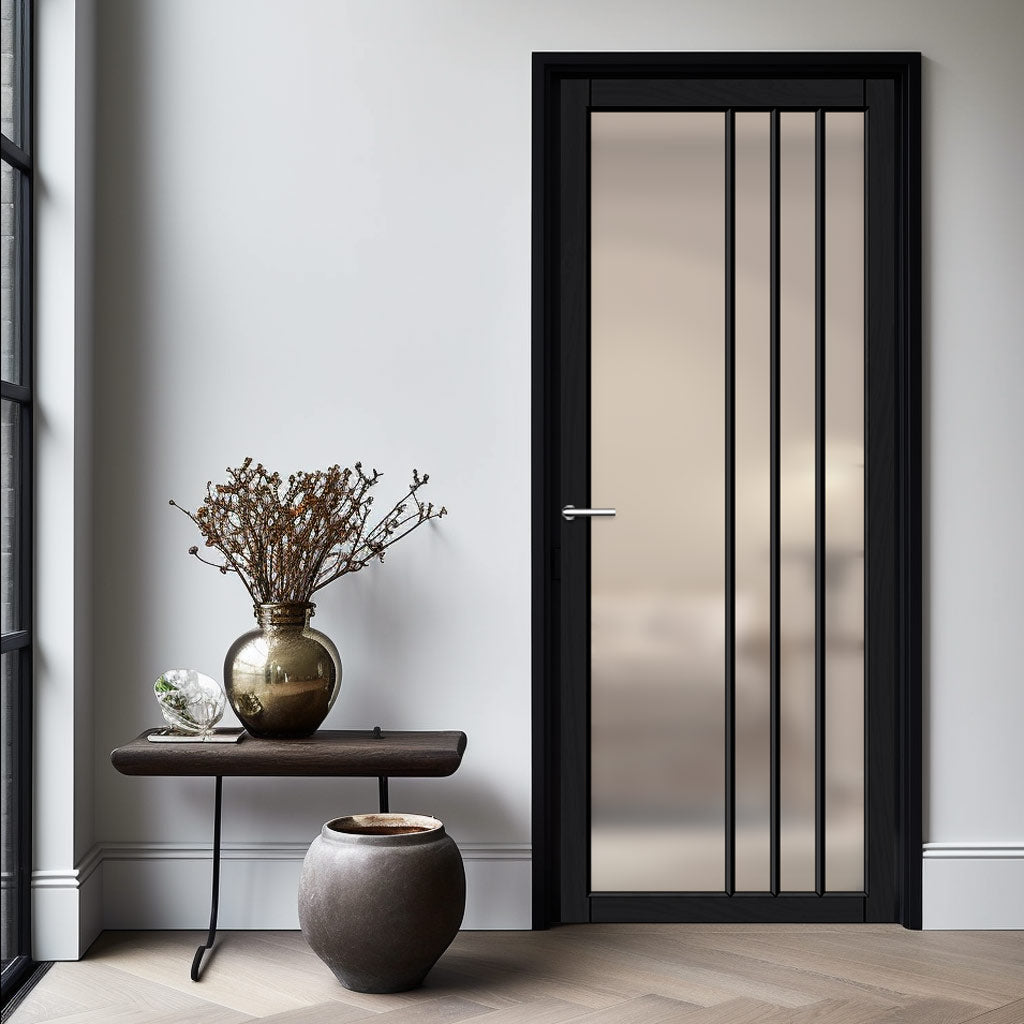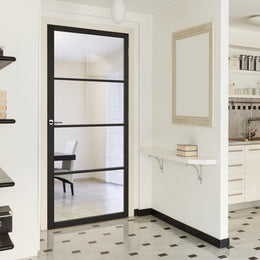Installing interior doors can seem straightforward, but several factors influence labor costs. Understanding these elements can help homeowners make informed decisions and budget effectively. In this article, we will explore the various factors that affect labor costs when installing interior doors.
Type of Door
The type of door chosen significantly impacts labor costs. Interior doors come in various styles, such as hollow core, solid core, and custom designs. Hollow core doors are generally lighter and easier to install, which can lead to lower labor costs. Conversely, solid core doors are denser and heavier, requiring more effort and time for installation. Custom doors often necessitate specialized hardware and techniques, which can drive up labor expenses further.

Moreover, the door’s design also matters. For instance, a standard flat panel door is typically easier to install than a decorative or intricate design that may require precise alignment and additional finishes. The complexity of the door directly correlates to the time and skill required for installation, affecting the overall labor cost.
Installation Location
Where the door is being installed can also influence labor costs. The installation of doors in new builds is generally less expensive than retrofitting doors into existing frames. Renovation projects may involve additional steps, such as removing old doors, repairing frames, or adjusting the wall. These extra tasks can increase labor time and, therefore, costs.
Additionally, the accessibility of the installation site plays a role. If the area is cramped or requires special equipment for installation, such as scaffolding or ladders, this can further drive up labor costs. In contrast, an easily accessible area allows for a more straightforward installation process, potentially reducing labor expenses.
Labor Rates
Labor rates vary widely depending on geographic location and market demand. Areas with a high cost of living or a strong demand for construction services will generally see higher labor costs. On the other hand, regions with a surplus of skilled labor may offer more competitive rates.
It’s important to consider the experience and qualifications of the laborers as well. Skilled professionals with years of experience might charge more, but they often complete the job more efficiently and with a higher quality of work. This can be a worthy investment if it leads to fewer issues down the line, such as misaligned doors or improper installations that may require additional repairs.
Door Frame Conditions
The condition of the door frame is another critical factor affecting labor costs. If the frame is in good shape, installation will be quicker and more straightforward. However, if the frame is warped, damaged, or not level, additional work will be required to repair it before the new door can be installed.
Repairs can include shimming, replacing parts of the frame, or even building a new frame altogether. Each of these tasks adds time and labor costs to the project. Homeowners should always assess their door frames before installation to avoid unexpected costs.
Hardware and Accessories
The type of hardware used with an interior door can also influence labor costs. Basic knobs and hinges will typically require less installation time than more complex hardware systems, such as electronic locks or specialized hinges. If the installation requires adjustments or additional drilling, this will also add to labor costs.
Furthermore, if homeowners opt for high-end or custom hardware, the installation may involve specific techniques that require skilled labor. This can lead to increased labor costs, but it can also enhance the overall appearance and functionality of the door.
Experience of the Installer
The experience of the installer plays a significant role in determining labor costs. A seasoned installer will likely work more quickly and efficiently than someone newer to the trade. While hiring an experienced professional may seem costlier upfront, their expertise can save time and reduce the likelihood of mistakes that could incur additional costs.
Moreover, skilled installers often have better access to tools and equipment that can expedite the installation process. They are also more likely to identify potential issues before they become problems, which can save homeowners money in the long run.
Local Regulations and Codes
Building codes and regulations vary from one locality to another and can influence labor costs for door installation. Some areas might require permits for certain types of installations, which can add to the overall cost. Additionally, if the installation does not meet local codes, it may necessitate rework or additional inspections, further increasing labor time and costs.
Homeowners should familiarize themselves with local regulations before beginning a project. Consulting with the installer can help clarify what is needed and avoid costly surprises during the installation process.
Seasonal Demand
The time of year can also impact labor costs for door installation. During peak construction seasons, such as spring and summer, demand for labor can drive prices up. Conversely, during slower months, such as late fall and winter, homeowners might find more competitive rates as contractors seek work.
Also, seasonal weather conditions can affect the installation process. Inclement weather may delay installation timelines, leading to increased labor costs if the project spans multiple days. Therefore, it can be beneficial to plan installations during off-peak seasons or favorable weather conditions.
Project Size
The size of the project can also affect labor costs. Installing a single door will typically cost less in labor than installing multiple doors at once. However, larger projects may allow for bulk pricing or reduced rates due to economies of scale.
Conversely, smaller projects may incur a minimum charge that doesn’t necessarily reflect the time spent on the job. Homeowners should discuss the scope of their project with potential installers to get a clear understanding of how size will influence costs.
Preparation Work
Preparation work is crucial before installing new doors and can significantly influence labor costs. This may include removing old doors, preparing the frame, and ensuring the area is clean and free from debris. If extensive preparation is required, it will increase labor costs.

Additionally, if there are any issues uncovered during the preparation phase—such as pest damage or mold—it may necessitate additional repairs before the installation can proceed. Homeowners should account for these potential costs when budgeting for their project.
Finishing Touches
Finally, the finishing touches on a door can also influence labor costs. Painting, staining, or sealing a door requires additional time and expertise. If these tasks are included in the installation price, it can significantly increase labor costs.
Homeowners who choose to do these finishing touches themselves may save on labor costs but should ensure they have the necessary skills and tools to achieve satisfactory results. Alternatively, hiring a professional for finishing can ensure a polished look but will add to the overall project cost.
Conclusion
Understanding the various factors that influence labor costs for installing interior doors can help homeowners make informed decisions and budget effectively. From the type of door and installation location to labor rates and the experience of the installer, each element plays a role in determining the final cost. By considering these factors, homeowners can better navigate the installation process and ensure they achieve the desired results without overspending.
Planning ahead, conducting thorough research, and communicating clearly with installers can lead to a smoother installation experience. Whether it’s a single door or multiple installations, being aware of these influences will lead to a more successful project.
FAQs
1. How can I reduce labor costs when installing interior doors?
You can reduce labor costs by preparing the area yourself, opting for simpler door designs, or scheduling the installation during off-peak seasons. Additionally, getting quotes from multiple contractors can help you find a competitive rate.
2. What is the average time it takes to install an interior door?
The average time to install an interior door ranges from 1 to 3 hours, depending on the complexity of the door and the condition of the frame. More complicated installations may require additional time.
3. Should I hire a professional or attempt a DIY installation?
If you have experience with home improvement projects, you might consider a DIY installation. However, hiring a professional can ensure a higher quality installation and help avoid potential issues that could arise from improper installation.
4. Are there any hidden costs in door installation I should be aware of?
Yes, hidden costs can include necessary repairs to the door frame, additional hardware expenses, or any permits required by local regulations. Always discuss these potential costs with your installer before beginning the project.
5. What types of interior doors are most cost-effective to install?
Hollow core doors are typically the most cost-effective to install due to their lightweight nature and simplicity. Solid core and custom doors can be more expensive due to additional labor and material requirements.